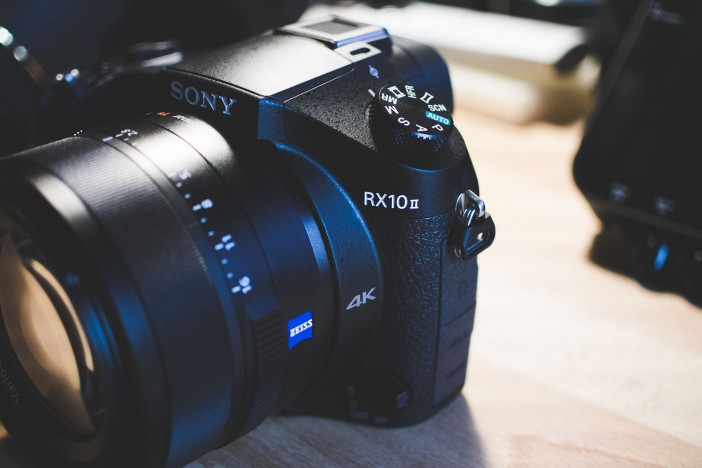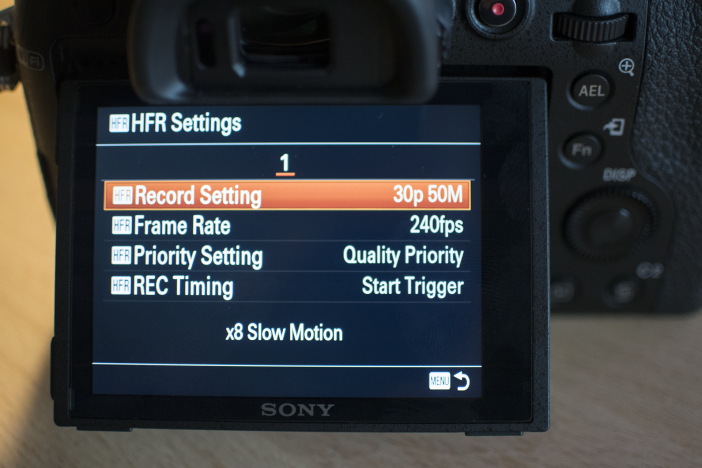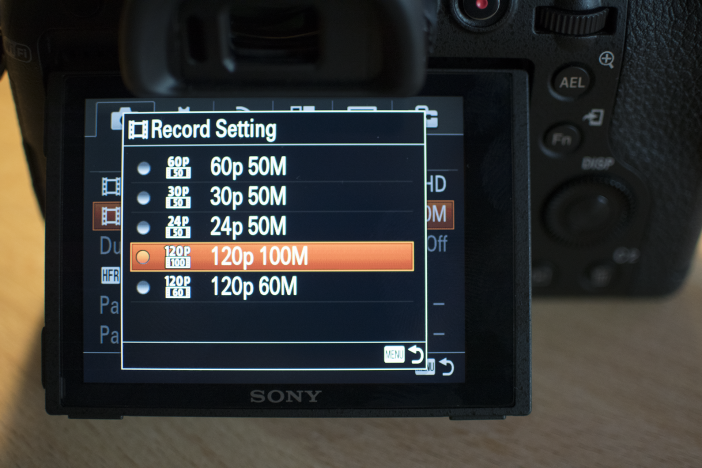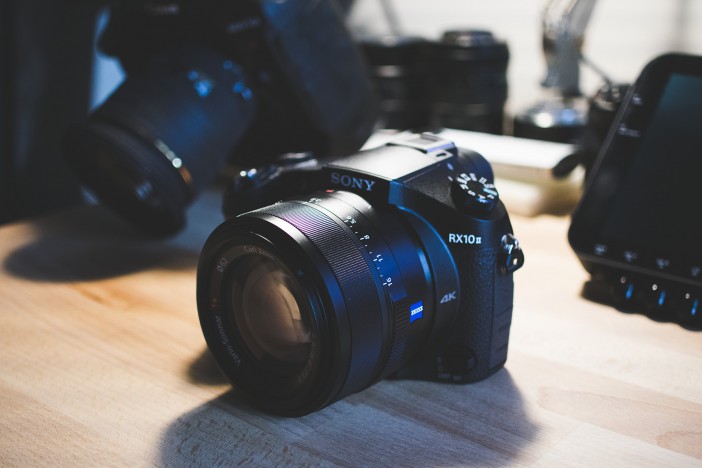By now you might be wondering which to pull the trigger on – the RX10 II or RX100 IV?
The good news is I have now finally got round to finishing my review of the RX10 II and have also bought the RX100 IV to compare it with…
A full review of the RX100 IV will follow as well. First let’s remind ourselves how the RX10 II is difference.
Both are built like a rock and are nice to handle, although obviously the ergonomics are very different due to the difference in form factor between RX10 II (bridge camera) and RX100 IV (pocket compact). One thing they both have in common though is the sheer amount of functionality does slow down the shooting experience occasionally due to a fussy user interface. Sony need to streamline it.
The RX10 II in S-LOG 2 goes down to ISO 800 so you can use the built in ND filter in all but the strongest sunlight wide open at F2.8 at 1/50 (180 degrees shutter for 24/25p). However on the RX100 IV S-LOG 2 has a minimum ISO of 1600! Weird! And of course the lens can go wide open to F1.8 at 24mm meaning the built in ND isn’t really strong enough. So what I have done is buy a the MAGFILTER Adapter by Carry Speed which allows you to quickly place any filter over the RX100 IV’s lens, having it magnetically attach. Quick to put on and pull off as there is no filter thread. Still, it is a consideration you don’t really have when using the RX10 II.
Final big difference is the lens, audio jacks and 4K recording times. Let’s get the latter out of the way first, if you’re filming events or live performances the RX10 II is the one to go for because the 4K mode of the RX100 IV is limited to 5 minutes per take and after that an overheating warning will prevent you going for much longer than another 2 minutes at a time. The RX10 II also has a headphone and mic jack, whereas the RX100 IV only has a USB multi-connector and HDMI output.
The RX10 II has a 24-200mm F2.8 lens compared to 24-70mm F1.8-F2.8 on the RX100 IV and that for me is the number one selling point of the RX10 II over the RX100 IV beyond the more-DSLR-like ergonomics and grip. However it also comes with the obvious disadvantage of being bloody massive compared to the RX100 IV! Also the zoom mechanism is seriously wobbly. You will not be doing many gentle pull backs in the middle of a shot or cinematically punching in closer to your subject, too unstable for that. One other consideration is the RX100 IV’s lens looks more pleasing at the wide end for close focus because F1.8 gives a more dreamy look and better bokeh than F2.8. At 70mm they are both F2.8 and both look the same.
I did find myself missing that lovely long end on my RX100 IV so what I did was to buy a cheap teleconverter. I bought one tiny one designed for a very small chip standard definition camcorder which is light enough for the magnet on the MagFilter to hold it in place and I bought a higher quality (but much larger and heavier) one which the MagFilter needs the assistance of your hand to keep it in place but with the advantage of stopping it from wiggling around or moving during a shot (unless you fluff your grip). You can hand-hold the lens and body like a DSLR and it works fine as a hack. No good for a tripod shoot. Here you would need some kind of anamorphic style clamp around the base of the lens on the RX100 IV very close to the body and an extension tube to clear the RX100 IV’s lens. I have tried this and it works but it is slower for handheld run & gun as obviously you need to unscrew the telephoto converter to get any other focal length. With the larger 2x teleconverter I got 140mm and it looked lovely, quite a shallow DOF so I ended up not missing the RX10 II as much after that. It’s actually quite sharp in the corners but the even smaller 1.5x teleconverters are mostly very soft in the corners. I recommend trying a few in a used camera store and just seeing which work best rather than the crap-shoot of eBay.
Now many of you will be interested in the 4K capabilities of these cameras after all they are amazing all-rounders and priced in that magic Tempting Triangle around the GH4 and NX1, certainly less in the case of the RX100 IV.
However it would be a crime not to mention the 1080p capabilities of these cameras, as they are absolutely stunning in what they deliver for that. Best affordable all-rounders for 1080p I have ever used. They are like a small sensor FS7 in some ways!
The 240fps slow-mo mode is of stunning quality, close to perfect 1080p and very very rarely does it suffer any moire whatsoever. Although the quality of the 480fps is the best ever delivered by a camera of this price range, I avoid 480fps most of the time. Why? It is a significant step down in quality from 240fps and quite a heavy crop into the sensor. Because 240fps slows down all but the most insanely fast action, you can then use Twixtor at 50% on top of it 99% of the time without morphing artefacts if you want 480fps anyway. Also I record 240fps in-camera to 50p or 60p (1080p) as slow-mo looks nice smooth, but more importantly this gives you the option to further slow the footage down by 50% to 30p or even 24p in post if you want slower. 240fps to 24p is “10x” slow-mo.
The 1080/120p as I said in part 1 is perfect. This is the one to use for continuous recording, for very long slow-mo sequences or when you need to do a lot of slicing and dicing in the edit. The 2 second burst of 240fps sometimes is not enough. 120fps (100fps in PAL mode) records at a higher bitrate of 100Mbit/s and resolution is even a tiny bit better than the already very good 240fps and looks as good as the 1080/24p mode, because it comes from a full pixel readout of the sensor with no binning at all and no crop. The RX10 II’s 240fps has a very slight crop compared to 1080/120p/24p as does the 4K mode. Same with the RX100 IV. It isn’t very bothersome as it is so tiny a difference in field of view.
Now S-LOG 2 on the RX10 II is of course very welcome and another FS7 feature to trickle down. Yes the A7S had it but that was much more expensive. Very generous of Sony to give us LOG on a bridge camera and a compact. This is an industry first in fact. S-LOG 2 is very customisable. If you have difficulties with colour grading when it is set to S-Gammut you can change the colour mode to Cinema or something else. Plenty to experiment with in the picture profile settings. Colour is not as good as with Canon LOG, S-LOG is a bit too extremely flat and trying to pack too much dynamic range into a 8bit codec really but the RX10 II does benefit from much smoother highlight roll off with it enabled and a wider dynamic range in S-LOG mode compared to the standard stills picture style modes. I do find exposure to be quite critical though still, since over or under exposed S-LOG shots have such weird colour. There is a sweet spot and you need an eye for getting it right in post too – that means going quite into Resolve. It is an investment in time more than anything really! I end up spending many hours in it.
Low light performance is exceptional given 1″ sensor size and 20MP. I don’t know how they manage it. I’ve had clean ISO 6400 shots on the RX10 II in S-LOG. Do not be afraid to shoot ISO 3200 or 6400 on this camera.
Looked closely at, the 4K images disappoint a little bit. They are quite soft and compressed at the 100% view, with a bit of a haze over colour. The lens doesn’t seem particularly sharp either. You will need to apply a bit of sharpening in post to get detail to pop especially on the long end of the zoom at infinity focus.
Although the RX10 II is a great all-rounder, there are things the fixed lens prevents. Anamorphic lenses don’t work well with the zoom on the RX10 II because the entrance pupil is quite far back into the body of the lens. In fact anamorphic adapters rarely work well on the front of zoom lenses on anything. I recommend the GH4 and a pancake prime like the Nikon 50mm F1.8 as one’s gateway into anamorphic. It has the wonderful 4:3 aspect mode to accommodate the cinema-style 2x stretch and now with the SLR Magic Rangefinder you can actually focus it!!
Focus in movie mode
The RX10 II has a bug which I highlighted in part 1 where focus shifts slightly between High Frame Rate standby mode and capture mode. However the larger issue is really with how bad continuous AF is in movie mode and HFR (slow-mo mode). It has a mind of its own and unfortunately a rather dumb mind at that. Let’s qualify that statement… if the actor is not moving and you are shooting on a tripod then manual focus will do just fine. However for HFR at 240fps with a 2 second burst where you can’t touch the focus ring because the camera has locked up it really is continuous AF or nothing as far as I am concerned. You can focus manually in standby mode but by the time you are capturing your subject has so often moved out of focus, especially at the longer reach of the RX10 II’s lens which is so tempting to use for this. The way I am working for live subjects and not on a controlled set is to get out of movie mode entirely and use stills mode where single-shot AF is mega fast at establishing focus before hitting record. Very useful. Unfortunately this is not something Sony felt important enough to implement in movie mode or HFR mode. Here there is no super fast single shot AF, only the terrible continuous AF or manual focus which locks up during a shot. The continuous AF behaves like a drunk focus puller. Unreliable. Slow. Doesn’t do what you expect. You could have the easiest of shots, with the subject bang centre and taking up 80% of the entire frame and it will still find a way to slip away and find the background. It’s pathetic. Also whereas single shot AF takes mere miliseconds to establish focus, continuous AF in movie mode is Captain Slow around the Top Gear track… ah gradually here he comes… here he comes… round the final corner…and… over….. the………. line.
This causes a delay before the establishment of your shot where you are ready to hit record and capture 240fps in that critical window where the drunk focus puller has accidentally found the subject. Hurrah.
To buy or not to buy, that is the question
I know Sony would like you to buy 2 cameras. Next year they will probably ask you to buy 4!
However let’s be realistic. In the end does the RX10 II deserve a place in your bag? Does it make sense as a second or third camera? Does it even go so far as to replace a treasured GH4 or A7S for some people?
I don’t entirely rate the RX10 II as a 4K camera versus something cheaper and more capable, aka the GH4. However slow-mo is a different matter. If you want to shoot a lot of 120fps and 240fps in full 1080p with LOG and a very sharply detailed image, absolutely go for this camera. This is the crowning glory of the RX10 II. All credit to Sony for pulling this off. The main reason the RX10 II is in my bag is for slow-mo, my other cameras don’t do it half as well (apart from the RX100 IV of course!!).
The 4K is ok but not as cinematic as an interchangeable lens camera. What about the Panasonic G7 instead? Let’s not forget, that is almost half the price of the RX10 II if you want 4K, with benefit of interchangeable lenses.
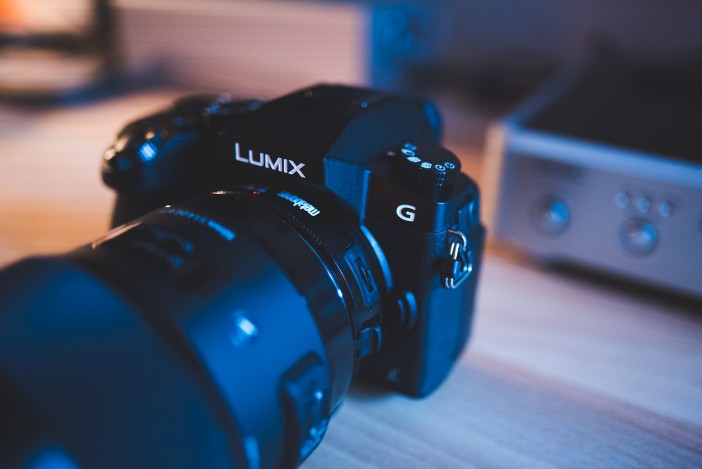
OK the RX10 II is a massive step up from the RX10 (original) and RX100 III for resolution and overall I do prefer it to the Panasonic FZ1000, mainly because of S-LOG and better 240fps. However it is worth considering the FZ1000 costs much less, has a longer zoom and better autofocus in movie mode.
The RX10 II has a built in ND filter by the way, something the FZ1000 forgot, though not surprising considering the low price of the Panasonic.
Considering interchangeable lenses and larger sensors, the decision gets more complicated. Does the RX10 II look as dreamy as a F0.95 prime on a GH4 for instance? Not the same look but cinematic in right hands. Is it as cinematic as a Canon L lens on the Sony A7S? Ditto again not the same look but cinematic – yes, in right hands.
So examine your priorities and decide…If you are going to replace entirely your lens collection with just one zoom glued to a sensor just slightly bigger than Super 16mm you better be aware of the trade off. Harder to make the background disappear in a tight space and normal focal lengths. Very deep depth of field at wide angle unless you are focussed super close to your subject. No ability to open up to F1.4 for better low light.
The range of 24-200mm with a constant F2.8 aperture and built in ND filter is very convenient in such a small all-in-one. Such a lens would be a physical impossibility in such a small a package with a full frame sensor.
Conclusion
For me the RX10 II is a slow-mo super zoom with S-LOG. It happens to shoot 4K too. If you stand to benefit from an all-round shot getter like this there’s very little reason not to buy the Sony RX10 II.
What I said about the original RX10 still holds true if not more so thanks to the added creative tools (HFR and 4K) in the mix.
“Super 8 and Super 16 movie cameras took a free-roaming Henri-Cartier Bresson style to documentary filmmaking and “run & gun” for the first time (as early as the 1960’s). Cadid footage of JFK on the election trail. French New Wave cinema in the 80’s. The run & gun simplicity of Bolex Super 16mm cameras is timeless. The Sony RX10 on paper is perfectly equipped to be a cinematic run & gun camera.” – EOSHD, November 2013.
Looking back it is amazing the extent to which Sony worked through my list of cons for the RX10 and fixed them. No more low bitrates restricted to AVCHD 24Mbit/s, no more codec mud in 60p, no more lack of 120fps slow-mo, certainly the ‘mediocre low light performance’ is no more.
However some quirks remain like the ridiculously pixilated poster frame for movies when you scroll through playback mode, so bad it sometimes makes it hard to identify the shot you’re looking for. The solution is to switch the ‘view mode’ in the menus but this slows the playback mode down to a crawl. This is an easy thing to get right, surely? Also the menus are still too dense and not organised sensibly from the perspective of the shooter. For example if you want to quickly switch to 120fps slow-mo during a 4K shoot you have to dig onto Page 2 of 9 on tab 1 of 6 and you can’t assign this file format choice of 4K / 1080p to the function menu let alone a custom key. It’s daft and makes you wonder if Sony’s firmware team have ever shot with what they design. Sony would say that it is not their job to shoot, they are coders – but I disagree. Get your coders out shooting Sony!!
Now the choice between RX100 IV and RX10 II, is one I have already made and it wasn’t the one I expected to make!
I decided that since the image quality and functionality (even an EVF!) are exactly the same on both cameras and it is only really the lens that differs, I would save my money and get the RX100 IV. This has the advantage of being able to slide into your pocket for every-day all-round image capture. It also has the advantage of an F1.8 wide end whereas the RX10 II is F2.8. It has the advantage of being able to go to 140mm with a cheap teleconverter – yes I know this is a bit of a hack but it works and the images just as nice as the RX10 II at 200mm.
It’s a personal decision in the end though – do you want the ability to record longer in 4K without the overheating warning after 5 mins on the RX100 IV? Do you want the larger body, better grip, more physical control, ISO 800 in S-LOG, mic & headphone sockets, longer zoom range? If so then the RX10 II is the better choice of the two and I won’t argue with you. Because it is a bloody good camera at the end of the day.
The RX100 IV is more like the Panasonic LX100. A compact camera with EVF that shoots 4K, however it has the slow-mo credentials where the LX100 doesn’t. We’ll come to that one next on EOSHD.
Pros
- Best slow-mo you can get for the price, at time of writing
- 4K codec holds up pretty well, though quite soft
- No 4K cut off after 5 mins like on the RX100 IV
- Big advance in video spec from previous RX10
- ISO 800 and built in ND makes shooting S-LOG easier than with A7S
- Constant aperture F2.8 24-200mm zoom from Zeiss has more expensive Canon Cinema EOS XC10 for breakfast
- Above average build quality and looks
- Uncompressed 4k HDMI output
- SD card slot on the side rather than in the battery compartment like FZ1000 and RX100 IV
- High quality EVF (though still smaller than it could be)
- Stepless aperture ring (or clicking – it toggles)
- Same batteries as Sony A7S
- Mic and headphone jacks
- Comfortable grip
Cons
- Sony firmware design team haven’t quite mastered the Apple simplicity thing yet!!
- Too many “cannot do this” messages
- Standby mode for 240fps and high frame rates completely locks down the camera, can’t even enter the menus or tweak manual focus
- “Invalid operation” message requires button press to dismiss immediately
- DRAM memory attached to sensor only big enough for 2 seconds of high frame rate buffering*
- Switching from PAL to NTSC to get 120fps instead of 100fps requires complete format of memory card in middle of your European 25p 4K shoot!
- Focus can be tricky especially in HFR mode – take your choice between fly by wire manual focus ring or terrible continuous AF
- Lens is on the soft side especially at long end
- Zooming is incredibly wobbly during a shot
- Massive lens due to larger 1″ sensor, thus lacks smaller body of 30x 1/2.3″ super zoom compacts like the Sony HX90 or Nikon s9900
- Refuses to record 100Mbit/s 4K or 1080p to anything other than UHS U3 cards even if they are fast enough anyway*Forgivable as sensor readout is raw at that stage, not yet compressed




